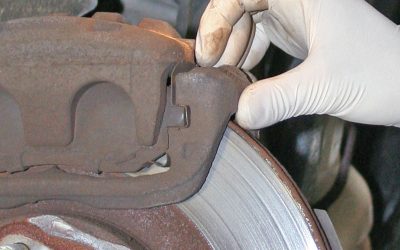Coolant Exchange Machine Approved
Subaru of America, Inc. has named the Wynn’s PowerFlush III as its approved coolant exchange machine. The machine was chosen for its three separate tanks that allow the ability to perform a clean water flush of the cooling system quickly and efficiently. A clean water flush is possible by filling one tank with fresh water, while the other two tanks hold new coolant and removed liquids.
The clean water flush process allows for a complete coolant exchange without the use of chemicals that could potentially harm the cooling system. Also, with three separate tanks, there is a complete isolation of any contaminants that could possibly be cycled back into the vehicle or any subsequent vehicles.
NOTE: Subaru of America, Inc. continues to discourage the use of flushing agents in its vehicles.
The high degree of coolant removal by using the PowerFlush III allows for the use of new Subaru Super Coolant in a vehicle that was not originally so equipped. This will permit the customer to take advantage of the 6 year, 75,000 mile coolant replacement interval of Subaru
Super Coolant.
All standard cooling system service practices, including the use of Genuine Subaru coolants and Subaru Coolant Conditioner should be continued.
NOTE: Subaru of America, Inc. does not recommend the use of other coolant exchange or flushing machines.
Subaru of America, Inc. has tested the Wynn’s PowerFlush III’s performance and has found the machine acceptable for use with all Subaru vehicles. The PowerFlush III does not use a flushing chemical. It will also power-purge the entire system, including the heater core.
Details about the machine and purchasing information are available on the Subaru Special Service Tools website at . [Edit: subaru.spx.com is no longer available.]
Radiator Cap Cleaning and Testing
Many radiator caps can be successfully cleaned. The most important factor is to thoroughly clean the negative pressure valve. If this is not done, any remaining debris may result in continued coolant overflow loss. If there is an excessive amount of debris or the sealing rubber on the cap appears to be pitted or damaged, replace the cap.
- Using clean water and a small brush – similar to a toothbrush – thoroughly clean the cap seal surface.
- Manually open the negative pressure valve and thoroughly clean the inner and outer surfaces of the valve.
- Check the radiator cap valve opening pressure using a radiator cap tester to ensure the cap is within specification. If the cap is out of specification, replace it.
Tribeca Air Conditioning Refrigerant Specifications
When servicing the air conditioning system on a 2006-2009 Tribeca, it is very important to identify whether you are working on a vehicle with front A/C only or a dual zone vehicle with both front and rear A/C systems. The amount of HFC-134a refrigerant specified will be different.
Front A/C Only Model
Minimum: 20 oz. (0.57 kg, 1.26 lb.)
Maximum: 22 oz. (0.63 kg, 1.39 lb.)
Front & Rear A/C Model
Minimum: 30 oz. (0.84 kg, 1.85 lb.)
Maximum: 32 oz. (0.90 kg, 1.98 lb.)
Make sure you install the correct amount of refrigerant for the vehicle you are servicing to avoid undercharging or overcharging the system.
Download PDF




0 Comments